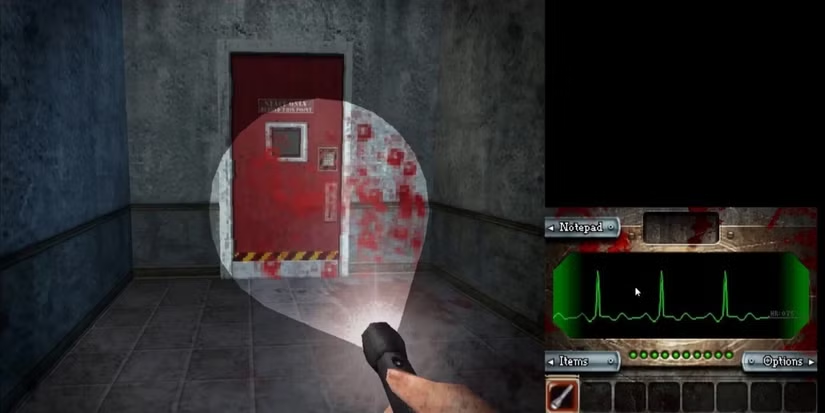
Dementium: The Ward places players in the shoes of an amnesiac protagonist who awakens inside a decrepit and bloodstained hospital. With no memory of how he arrived there, he must explore the building’s dark halls, uncovering disturbing notes, grotesque creatures, and eerie clues about the institution’s hidden experiments. The narrative is fragmented and surreal, leaving players to question the reality of what they see and whether the nightmare is real or the result of a fractured mind.
Developed by Renegade Kid and released for the Nintendo DS in 2007, Dementium: The Ward was an ambitious attempt to bring survival horror to a handheld platform not usually associated with the genre. The development team, formed by industry veterans, wanted to deliver a mature horror experience that utilized the DS’s unique features. Although small in scale compared to larger studios, Renegade Kid managed to craft a title that stood out among the handheld library for its bold attempt at horror immersion on portable hardware.











Gameplay
The game uses a first person perspective with movement on the D pad and free look through the stylus, enabling precise aiming and flashlight control. Players explore interconnected hospital floors, solve environmental puzzles, manage scarce ammunition, and engage in tense encounters with twisted creatures. Save points are intentionally spaced to heighten risk, and weapon choice matters because resources are limited and enemies can overwhelm careless players. The pacing alternates between quiet investigation and sudden combat to sustain dread.
Visuals & Style
For a handheld release, Dementium is strikingly moody. The hospital is rendered with flickering lights, smeared textures, and narrow sightlines that keep players on edge. Audio design carries much of the horror with rattling vents, remote alarms, and abrupt stingers that make every corridor feel unsafe. Monster designs suggest failed surgeries and warped anatomy, reinforcing the theme of medical malpractice turned monstrous. Together, the visuals and sound create a cohesive, oppressive tone uncommon on the DS.
Importance in Survival Horror History
Dementium matters because it showed that survival horror did not need living room hardware to be effective. By adapting core genre pillars such as vulnerability, resource scarcity, and environmental storytelling to a portable device, it broadened expectations for where serious horror could live. Its stylus aiming and flashlight handling anticipated later experiments with touch driven control schemes in horror and first person games on mobile and handheld systems.
Reception vs Historical Value
Critics at launch praised the ambition, atmosphere, and technical achievement, while pointing to repetition, harsh save spacing, and difficulty spikes as notable flaws. Over time the game’s reputation settled into cult status, appreciated as a bold proof of concept that delivered genuine unease within tight constraints. Historically it is viewed as an important outlier that expanded the genre’s footprint and inspired a reassessment of what handheld horror could attempt.
Availability & Collectibility



The original release is on Nintendo DS and remains collectible, with complete copies drawing steady interest from horror enthusiasts. An enhanced version titled Dementium Remastered later arrived on Nintendo 3DS with refined controls, improved performance, and quality of life tweaks, making it the most accessible way to play today. Physical DS editions are increasingly scarce, while the 3DS remaster offers a practical route for players who want the experience without hunting down older cartridges It released on the Nintendo Switch in 2015, later in 2023 it made its way to PS4 and PS5 through the PSN.
Buy on PSN : Dementium: The Ward
Trailer:
